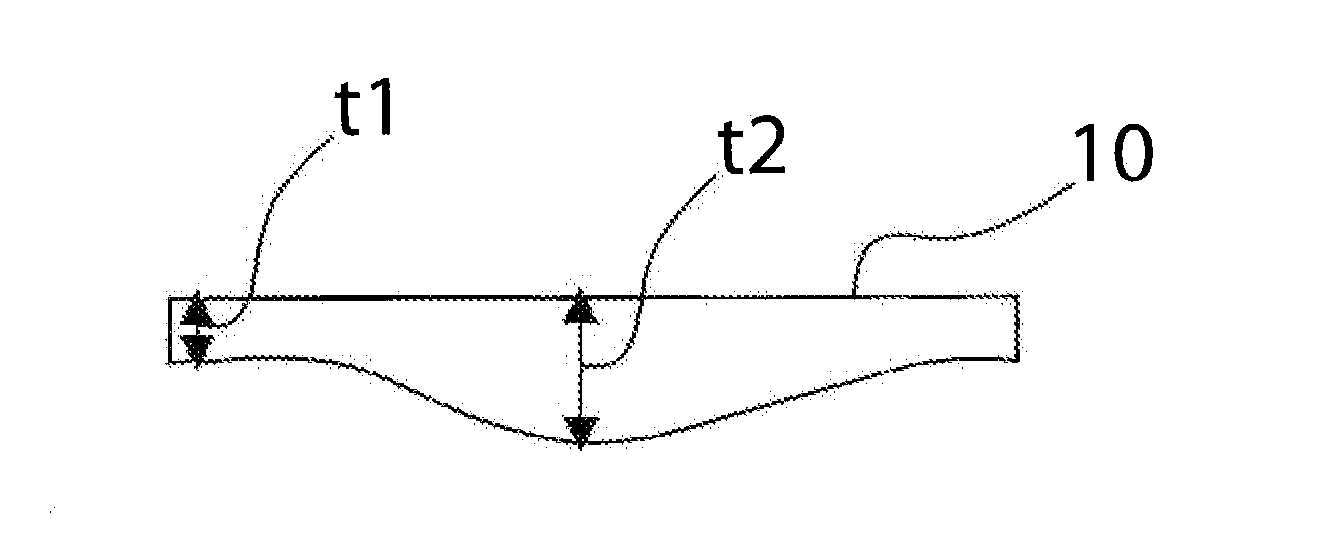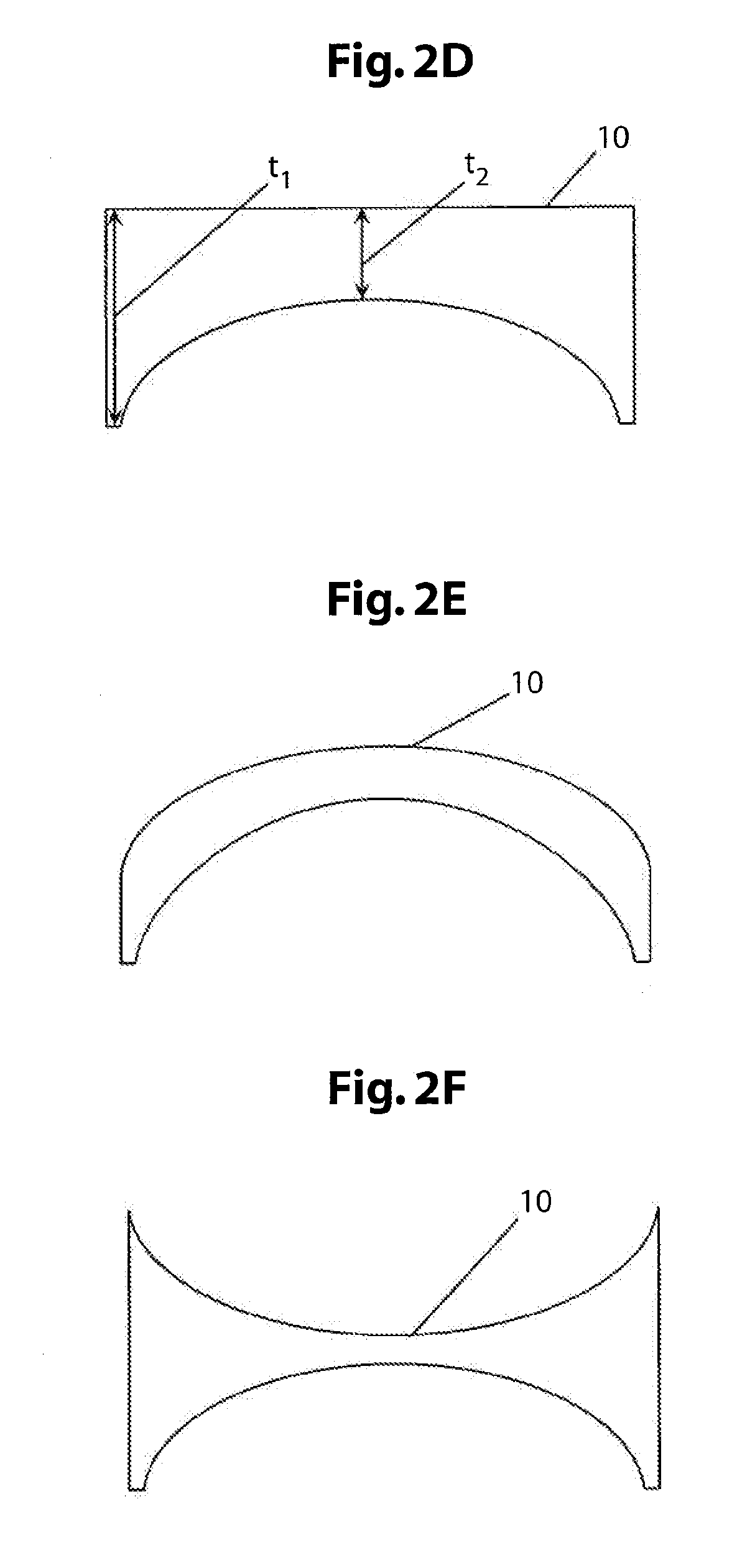Method and apparatus for correcting optical aberrations using a deformable mirror
- Summary
- Abstract
- Description
- Claims
- Application Information
AI Technical Summary
Benefits of technology
Problems solved by technology
Method used
Image
Examples
Embodiment Construction
[0035]FIGS. 1 and 2A-2F illustrate a deformable mirror 10 having a variable thickness. In some embodiments, as depicted in FIGS. 2A-2C, deformable mirror 10 is thinner at its periphery than at its center, i.e. , peripheral thickness t1 is smaller than central thickness t2. In other embodiments, as depicted in FIGS. 2D-2F, deformable mirror 10 is thicker at its periphery than at its center, i.e., peripheral thickness t1 is greater than central thickness t2. The relative thickness of the periphery and center of the deformable mirror 10 affects the shape of the deformation that will result when a deforming force is applied to the deformable mirror 10. By modifying the relative thickness of its periphery and center, the deformable mirror 10 can be configured to correct for various effects including, but not limited to, high numerical aperture focus, depth aberrations, thermal lensing, and off-axis aberrations.
[0036]The relative thickness of the periphery and center of the deformable mir...
PUM
 Login to View More
Login to View More Abstract
Description
Claims
Application Information
 Login to View More
Login to View More - R&D
- Intellectual Property
- Life Sciences
- Materials
- Tech Scout
- Unparalleled Data Quality
- Higher Quality Content
- 60% Fewer Hallucinations
Browse by: Latest US Patents, China's latest patents, Technical Efficacy Thesaurus, Application Domain, Technology Topic, Popular Technical Reports.
© 2025 PatSnap. All rights reserved.Legal|Privacy policy|Modern Slavery Act Transparency Statement|Sitemap|About US| Contact US: help@patsnap.com



